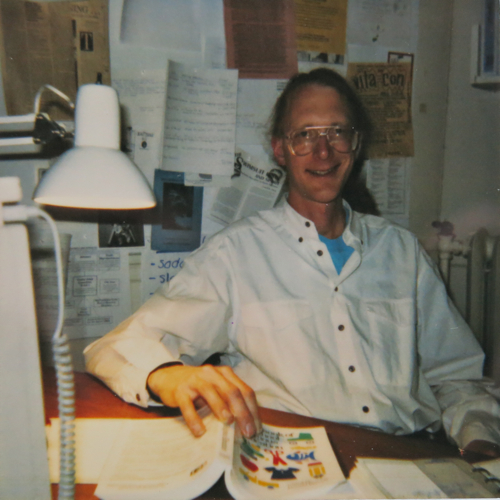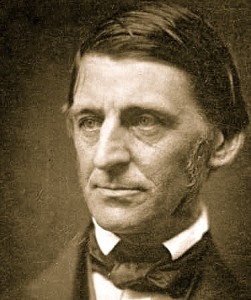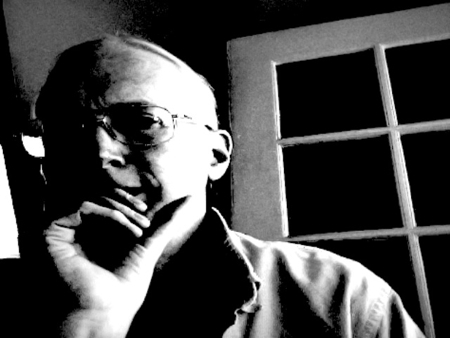Recently, I stumbled across the AntWeb site, sponsored by the California Academy of Sciences. Once you create a login (and all you have to provide is a username and password, no other info), you have access to tons of photographs of ant specimens, taken through a powerful microscope. Of particular interest to me is the online field guide to California ants, with photos of nearly all of the 270 resident species. The curator of the California pages writes:
“Prominent California ants include seed-harvesting species in the genera Messor, Pheidole and Pogonomyrmex; honeypot ants in the genus Myrmecocystus; a diverse array of species in the genera Camponotus (“carpenter ants”) and Formica; native fire ants (Solenopsis spp.); velvety tree ants (Liometopum spp.); and the introduced Argentine ant (Linepithema humile). This last named species is particularly common in urban and suburban parts of California, where it establishes dense populations and eliminates most native species of ants.”
I’ve always thoughts ants were interesting creatures. Now having looked through dozens of photos of ants I will go further and say that they are beautiful creatures. Even the Argentine ant appears beautiful, in spite of the destruction it does to native arthropods.
I am also fascinated by the written descriptions; these descriptions have their own kind of beauty, which may be found in their economy and laconic precision. Here, for example, is how to identify the Argentine ant — remembering that you will need a powerful binocular microscope to see all these details:
“Diagnosis among workers of introduced and commonly intercepted ants in the United States. Antenna 12-segmented. Antennal scape length less than 1.5x head length. Eyes medium to large (greater than 5 facets); do not break outline of head; placed distinctly below midline of face. Antennal sockets and posterior clypeal margin separated by a distance less than the minimum width of antennal scape. Anterior clypeal margin variously produced, but never with one median and two lateral rounded projections. Mandible lacking distinct basal angle. Profile of mesosomal dorsum with two distinct convexities. Dorsum of mesosoma lacking a deep and broad concavity; lacking erect hairs. Promesonotum separated from propodeum by metanotal groove. Propodeum with dorsal surface not distinctly shorter than posterior face; angular, with flat to weakly convex dorsal and posterior faces. Propodeum and petiolar node both lacking a pair of short teeth. Mesopleura and metapleural bulla covered with dense pubescence. Propodeal spiracle bordering posterior margin of propodeal profile. Waist 1-segmented. Petiole upright and not appearing flattened. Gaster armed with ventral slit. Erect hairs lacking from cephalic dorsum (above eye level), pronotum, and gastral tergites 1 and 2. Dull, not shining, and color uniformly light to dark brown. Measurements: head length (HL) 0.56–0.93 mm, head width (HW) 0.53–0.71 mm.”




 “Whenever the pulpit is usurped by a formalist, then is the worshipper defrauded and disconsolate. We shrink as soon as the prayers begin, which do not uplift, but smite and offend us. We are fain to wrap our cloaks about us, and secure, as best we can, a solitude that hears not. I once heard a preacher who sorely tempted me to say, I would go to church no more. Men go, thought I, where they are wont to go, else had no soul entered the temple in the afternoon. A snow storm was falling around us. The snow storm was real; the preacher merely spectral; and the eye felt the sad contrast in looking at him, and then out of the window behind him, into the beautiful meteor of the snow. He had lived in vain. He had no one word intimating that he had laughed or wept, was married or in love, had been commended, or cheated, or chagrined.”
“Whenever the pulpit is usurped by a formalist, then is the worshipper defrauded and disconsolate. We shrink as soon as the prayers begin, which do not uplift, but smite and offend us. We are fain to wrap our cloaks about us, and secure, as best we can, a solitude that hears not. I once heard a preacher who sorely tempted me to say, I would go to church no more. Men go, thought I, where they are wont to go, else had no soul entered the temple in the afternoon. A snow storm was falling around us. The snow storm was real; the preacher merely spectral; and the eye felt the sad contrast in looking at him, and then out of the window behind him, into the beautiful meteor of the snow. He had lived in vain. He had no one word intimating that he had laughed or wept, was married or in love, had been commended, or cheated, or chagrined.”